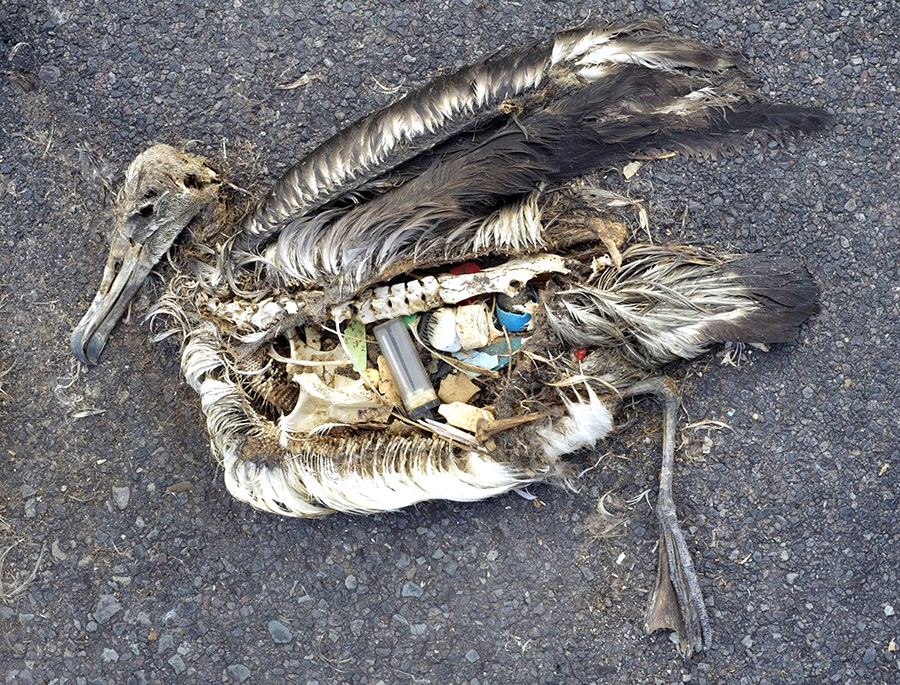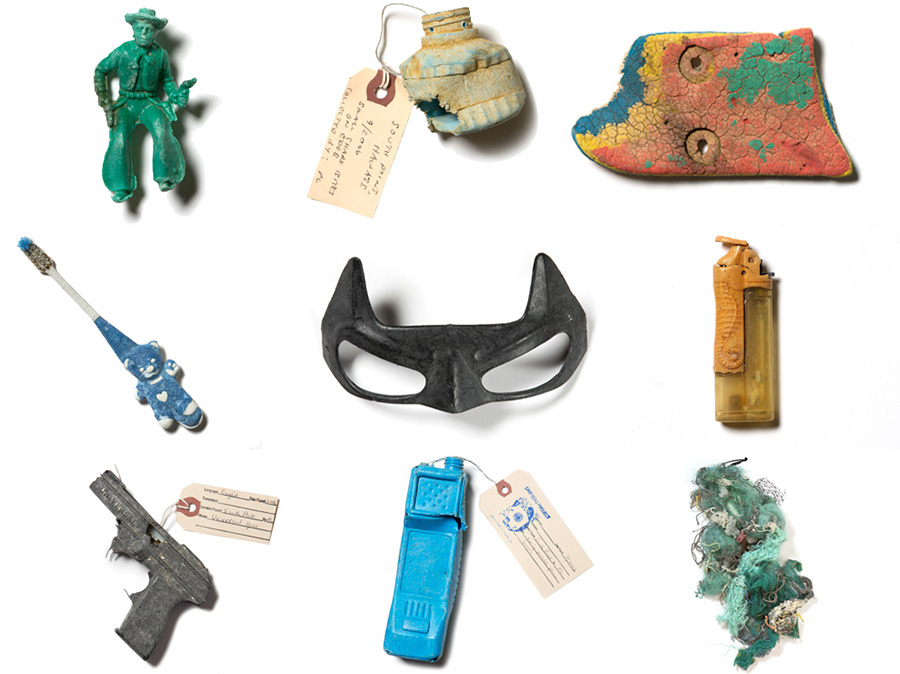Great Pacific Garbage Patch

Albatross: The marine debris of the Great Pacific Garbage Patch can devastate marine life in the North Pacific Subtropical Gyre. The stomach contents of this unfortunate albatross include plastic marine debris fed to the chick by its parents.

Turtles, too, are put in danger by marine debris. Turtles can easily be entangled in discarded fishing nets or mistake the gelatinous texture of plastic for a jelly, their favorite food.

Perhaps one of the starkest impacts on marine life is the phenomenon of “ghost fishing.” Most large debris in the Great Pacific Garbage Patch is made up of inexpensive fishing nets. Ghost fishing happens when these discarded nets continue to “catch” marine life—suffocating marine mammals such as this endangered Hawaiian monk seal.

Mixed in with microplastics are larger pieces of plastic. Most plastics are refuse from land activities in North American and Asia. Some plastics are accidentally dumped from oceangoing vessels. All the plastics on this page were culled from the Great Pacific Garbage Patch.
The Great Pacific Garbage Patch is a collection of marine debris in the North Pacific Ocean. Marine debris is litter that ends up in the ocean, seas, and other large bodies of water.
via National Geographic
